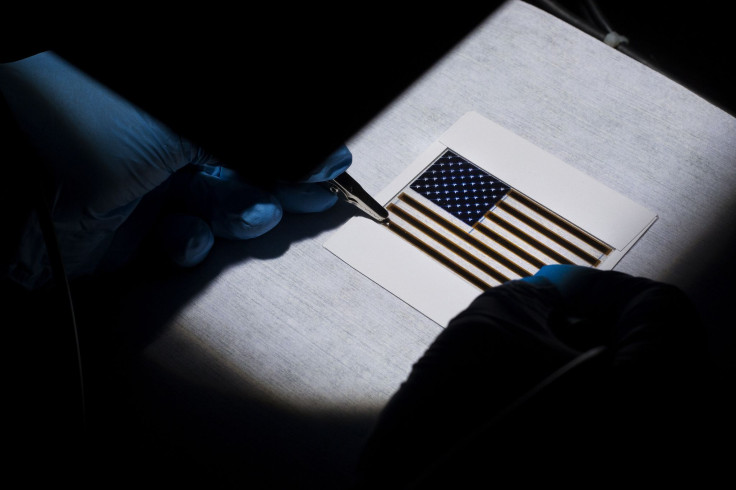First Colored, Transparent Solar Cells Could Offer ‘Beautiful’ Alternative To Solar Panel Technology

Imagine a beautiful stained-glass window that could also charge your cell phone, laptop, desk lamp and other appliances. That’s the vision of researchers from the University of Michigan who have developed the first colored, transparent solar cell. Developers say the tinted photovoltaics could be used in the windows of homes and office buildings to harvest solar energy as an aesthetic alternative to the typical black solar panels spotted on city and suburban rooftops.
"I think this offers a very different way of utilizing solar technology rather than concentrating it in a small area," Jay Guo, a professor of electrical engineering and computer science at the university and lead author of a paper detailing his team’s work with colored solar cells, said in a statement. "Today, solar panels are black and the only place you can put them on a building is the rooftop. And the rooftop of a typical high-rise is so tiny.”
According to the study, published in the journal Scientific Reports, the razor-thin silicon and organic solar cells are sandwiched between two transparent electrodes that let light in and create an electrical current. The hybrid cells can be made to a variety of color specifications.
Researchers say their cells differ from other solar cells on the market because they don’t use dyes or microstructures that can blur the image behind them. To get different colors, engineers varied the thickness of the layer of semiconducting silicon – 6 nanometers thick for blue, 31 nanometers thick for red, and so on.
Guo says the colored transparent photovoltaics address some of the issues that arise with using rooftop solar panels. The multifunctional technology can be applied to windows all over the city, meaning their application is virtually endless. Not to mention they’re something people would actually like to look at.
"We think we can make solar panels more beautiful—any color a designer wants,” Guo said. “And we can vastly deploy these panels, even indoors."
But the technology will require some fine-tuning. As it stands, the colored solar cells only absorb one-third of the light absorbed by black photovoltaics, which take in the whole spectrum of light.
The team from the University of Michigan isn’t the first to investigate transparent solar cell technology. Last year, engineers from Oxford University used a mineral called perovskite, an oxide used in ceramic superconductors, to create flat, see-through solar cells. Thin-film photovoltaic cells were dispersed throughout the glass.
Engineers are always looking for new ways to improve solar technology. One physics professor at Harvard University even proposed harvesting Earth’s own infrared light to generate power.
© Copyright IBTimes 2024. All rights reserved.












